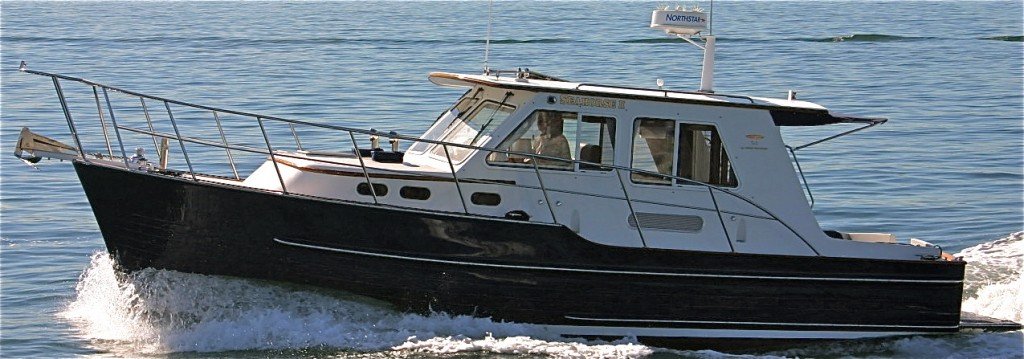syf350 wrote:I thought trawlers were full displacement?
Well, real trawlers, the ones that pull a trawl net around, are invariably full displacement just like most commercial fishing boats.
The term "trawler" as applied to the kinds of boats we talk about on this forum is nothing but marketing hype, a name glommed onto because of the image of a tough, stable, go-anywhere fishing boat.* So with regards to our boats, it's a totally meaningless term.* They could have as easily called them Nogginhulls--- the name would have been as accurate.
The upside of a displacement hull (there's no such thing as a "full-displacement" hull-- that's what the term "displacement" means--- it either is or it isnn't) is that it's very seaworthy and very exononmical to drive though the water.* Since it can't go any faster than it's displacement speed, once you have enough power to achieve that, adding more does nothing other than dig a deeper hole in the water.
Hence the "semi-planing" hull which a lot of people and manufacturers insist on calling a semi-displacement hull even though that's an inaccurate term.** As John said, a semi-planing hull buys you a greater degree of stability--- which is not the same thing as a greater degree of seaworthiness--- and it can be driven at faster-than-displacement speed because of the flatter aft secton of the boat lifts the hull up to a degree which reduces drag and allows the hull to move faster through the water.
Anything that when out of the water has a hull bottom that looks like a Grand Banks, CHB, etc., etc., etc. is a semi-planing boat.* So despite the meaningless term, it's safe to say that most---not all--- recreational "trawlers" are semi-planing.
Wet ride.* Our Grand Banks has a very wet ride even at 8 knots (or less).** This is because there is very little flare in the cross-section of the forebody of the hull.* So when heading into, or quartering into, waves, particuarly on a windy day which up here is most of them, the waves whack into the hull and go ripping up the sides.* But instead of this rising water being thrown out and down, on a GB it goes straight up higher than the gunwale where the wind then catches it and slams it into the boat's superstructure, mainily the front and forward sides of the cabin.* On our GB on a typical Bellingham Bay day, our windshield wipers, which fortunately do an excellent job, are going most of the five mile run across the bay even on a "nice" day.* That's a wet ride.
A boat with a lot of flare in the bow, or with spray rails down near the waterline, won't throw as much water vertically into the air where the wind can catch it and blow it onto the boat.* That's a "dry ride."
Wet and dry rides often have nothing to do with speed.* It's all about hull shape.* There were two main types of PT boats used in WWII.* One was made by Elco, the other by Higgins.* While they were designed to the same mission specs they were signficantly different int their hull configurations.* The 78' Higgins boat, while faster and (some said) a bit more maneuverable had an extremly wet ride (which made for a wet crew).* The 80' Elco boat had more flare and width in the forebody and had a dry ride even at its maximum speed of some 45 mph.
*

